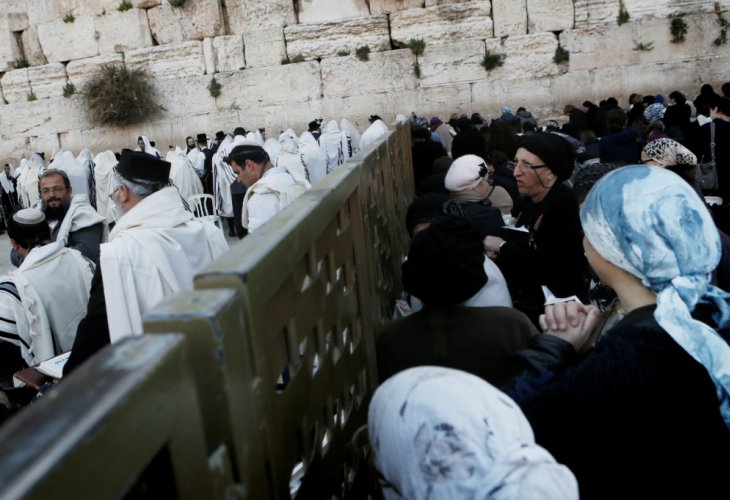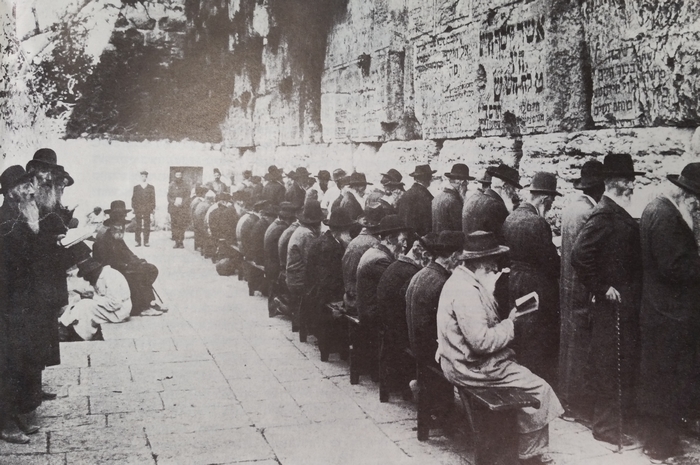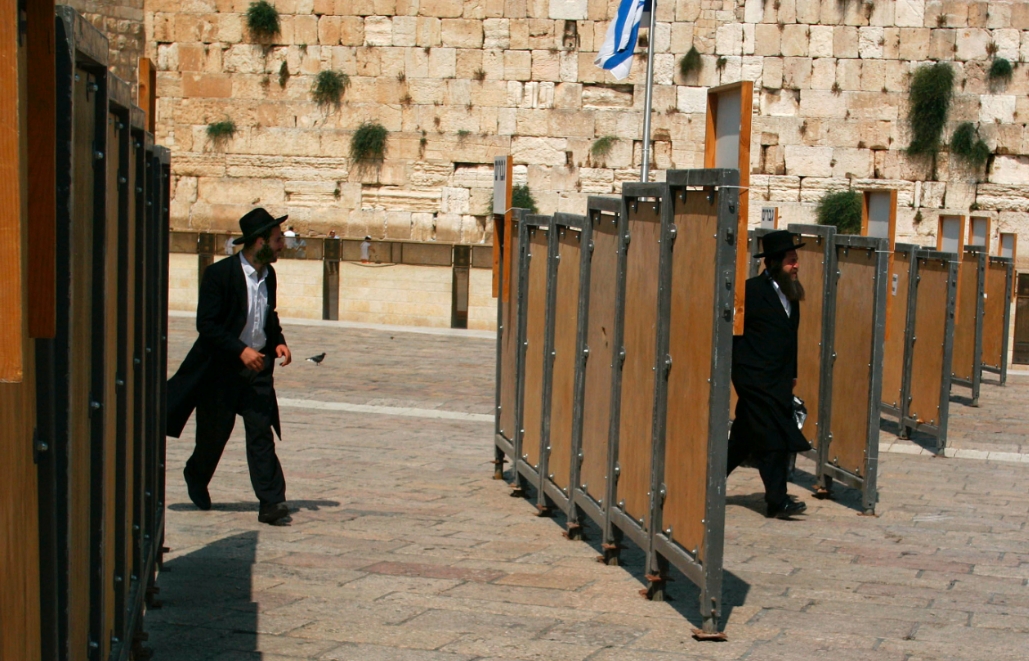The Wall and the Fence: A Historical Reflection
Some argue that the Western Wall was always a place of prayer without separation. But history tells a different story.
 (Photo Illustration: Flash 90)
(Photo Illustration: Flash 90)For over a year and a half, political battles raged between the government, the Chief Rabbinate, and ultra-Orthodox Knesset members, culminating in the freeze of the Western Wall framework. Now, many are vying for public attention. Various publications feature photos of the Western Wall plaza post-Six Day War or in other instances, showing mixed dancing by young men and women. The goal of these publishers is to suggest that the longstanding custom at the Western Wall was to congregate and pray there without any partitions, without gender segregation.
But is this really the case? Let's explore the history of the Western Wall.
The Ottoman Era
History shows that initially, Jews did not pray at the Western Wall plaza. They prayed around the Temple Mount, but not specifically at the Western Wall. Rabbi Ovadiah of Bartenura is the first to document prayers at the Wall. Many Jews focused on praying at the Wall because it was close to their homes. An earthquake in Jerusalem in 1546 led to the collapse of many structures near the Wall, allowing Jews to expand their prayer activities at the Western Wall. However, this was not initially done at a prayer plaza, but on the street connecting the Mughrabi Quarter to the Dung Gate and the Temple Mount entrance. This narrow, long street served as a place for Jewish prayers. Initially, Jews arrived solo after praying in synagogues elsewhere. Over time, local minyans developed at the Wall, sometimes partial, such as only praying the Mussaf service on Shabbat and holidays.
During Ottoman rule, authorities recognized the Jews' yearning to pray at the Wall and decided to charge a "prayer fee" for every Jew who came to pray. In those times, there was no prayer plaza, nor even benches, which were a distant dream—Jews had to contend with the trash their Muslim neighbors left at the site.
Occasionally, Jews managed to lobby and bribe the neighbors and authorities to allow them to bring benches and occasionally a partition. There is photographic evidence from 1903 by British tourist Herbert Rix showing a partition being erected at the site. Shortly thereafter, under local Arab encouragement claiming the area was theirs, the Ottomans prohibited the installation of benches, lighting, or partitions.
The prohibition led many lobbyists and philanthropists to attempt purchasing the plaza and surrounding homes where the obstructive Arabs lived. Among those attempting this were Sir Moses Montefiore, Baron Rothschild in 1887, David Yellin in 1917, and others—though these attempts failed for various reasons.
At this time, many Jews emigrated to the land, doubling the Jewish population in Jerusalem. Both religious and secular Jews came to pray at the Wall. An emotional account by future Education Minister and President Zalman Shazar speaks of the tears of Jews as they approached this remnant of the Temple.
Under British Rule
However, Jews faced various forms of harassment when attempting to pray at the Wall. In 1920, returning Muslims from the Temple Mount mosques attacked Jews heading to the Wall. Shortly thereafter, without the Jewish community's input, the British military governor approved renovations to the Wall. The Jewish community in Jerusalem strongly protested. During this time, Muslims began spreading Quranic tales contending the Western Wall was holy to Muslims because the "prophet" Muhammad allegedly tied his flying beast, Al-Buraq, there—a narrative promoted by Salah ad-Din to strengthen Muslim ties to Jerusalem, despite no mention in the Quran.
In 1929, on Yom Kippur, Jews erected a partition and benches at the Wall for fatigued worshipers. Mid-service, a British officer emerged, dismantling the partition, causing outrage—not only among the ultra-Orthodox.
 Men's Section at the Wall - from a Ministry of Defense publication
Men's Section at the Wall - from a Ministry of Defense publicationThe newspaper "Doar HaYom," edited by Itamar Ben-Avi, described how the officer removed the partition, despite requests from the sexton to wait until the conclusion of the Amidah prayer. The officer refused, ordering police to beat the Jews there and dismantle the partition, injuring several congregants, including two women.
The following day, Doar HaYom continued describing the officer's trampling of the partition and the police's assault on Jews, seizing their seating.
Even the socialist "Davar" newspaper reported on the incident, clarifying the partition was not intended to provoke authorities but existed even during Ottoman rule. It noted the partition remained over Rosh Hashanah without incident, until removed on Yom Kippur by the officer intent on harassing Jews.
Jewish Community's Outcry
The Jewish community leaders were outraged by the event. Poet Chaim Nachman Bialik issued a major protest; Tel Aviv Mayor Meir Dizengoff demanded the British dismiss the Jerusalem governor; and historian Joseph Klausner published a "call" disputing the Muslim claims of the Wall's sanctity, arguing Muslims don't treat it as sacred given they litter with trash and excrement. Klausner noted Ottoman authorities permitted Jews to place partitions and seating at the Wall during prayers, discontinued two years before British takeover due to local opposition when bribes dried up.
Tel Aviv city officials declared a work stoppage as a mourning gesture for the desecration at the Wall. The outrage extended beyond the religious and ultra-Orthodox as secular Jews perceived the partition's removal as a blow to Jewish nationalism. In efforts to calm tensions, journalist Moshe Beilinson wrote in "Davar" about the "other values" of Jewish national revitalization like immigration, labor, and land. Even Ben-Gurion spoke at a National Committee meeting, calling for peace with Arabs rather than escalating the incident.
This incident laid the groundwork for the Western Wall White Paper, banning Jewish installation of partitions and benches and prohibiting shofar blowing at the Wall. In response, young people smuggled shofars to the Wall, and despite the ban, Jewish prayers continued amid Arab provocations.
Despite the police's indifference to Arab assaults on Jews, tensions escalated. Demonstrations occurred around the Wall, led by both Betar and Arabs, culminating in the infamous 1929 riots, where organized Arab mobs attacked Jews throughout Jerusalem neighborhoods. These pogroms resulted in 133 Jewish deaths, 339 injuries, and significant property damage.
In the aftermath, Lord Passfield's White Paper shocked Jews in Israel and worldwide: it proposed to limit Jewish immigration to protect Arab employment, prohibit Jewish land purchases, and more.
Why Have a Partition?
Until the Six-Day War, no partitions were erected again at the Wall—not due to lack of desire but because the British forbade it. Period photos depict gender-segregated prayer despite the absence of a partition: men on one side, women on the other. Rabbi Yitzhak Avigdor Oranstein even stood between men and women to ensure separation during services.
 (Photo Illustration: Flash 90)
(Photo Illustration: Flash 90)After the Six-Day War, the Chief Rabbinate took charge of the Wall plaza, instating the current partition without issues. Those wishing to engage in mixed prayer, such as small Conservative groups at the Wall, conducted services in the plaza's upper part—not officially a prayer area. Following protests, they moved the Conservative service to Robinson's Arch, where it remains.
For those wishing to engage in mixed prayer at the Wall, solutions have existed for many years. The framework's demand isn't about solving a problem—it's about recognizing Reform and Conservative Judaism. The fight over this issue distorts history.

